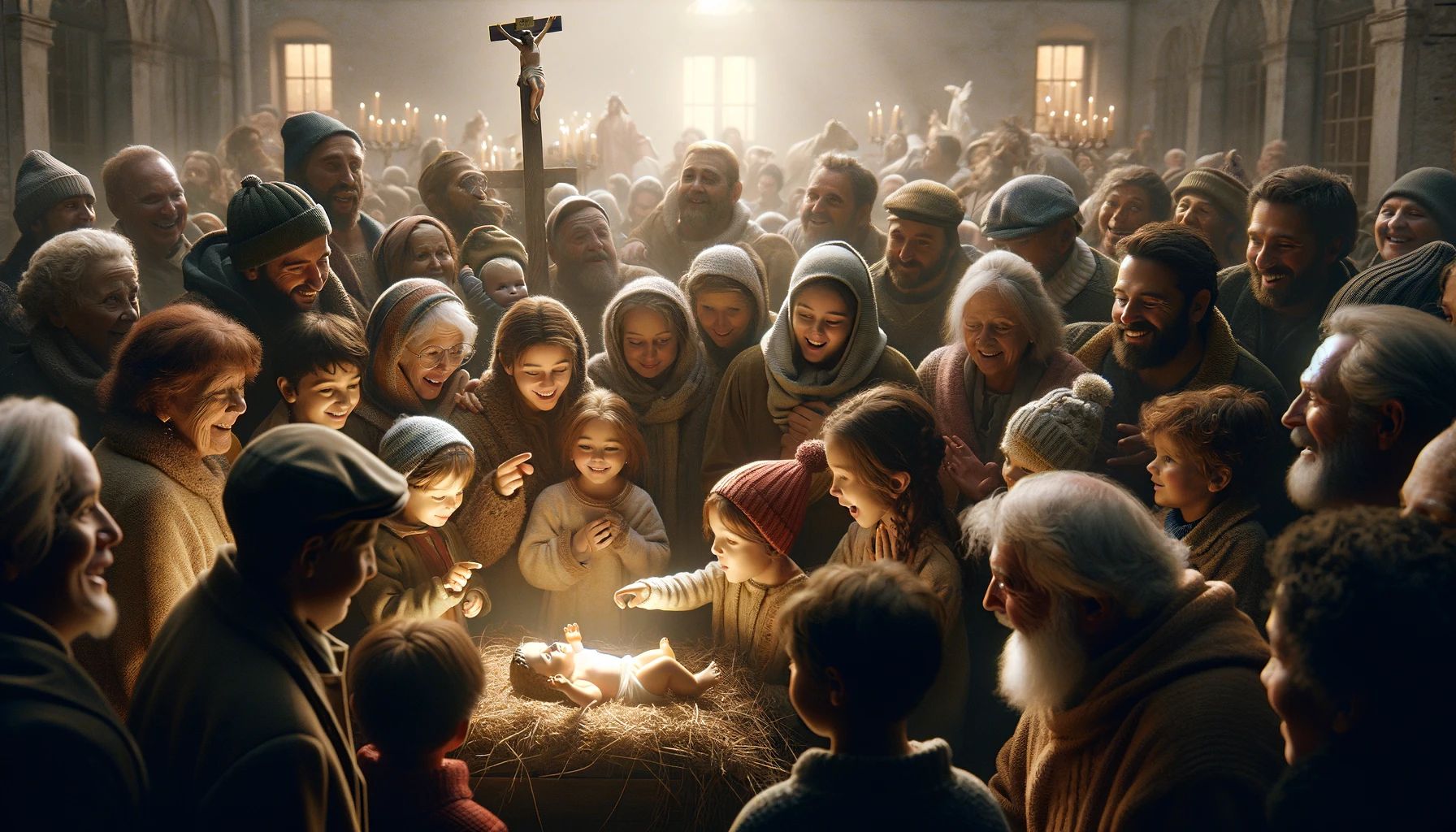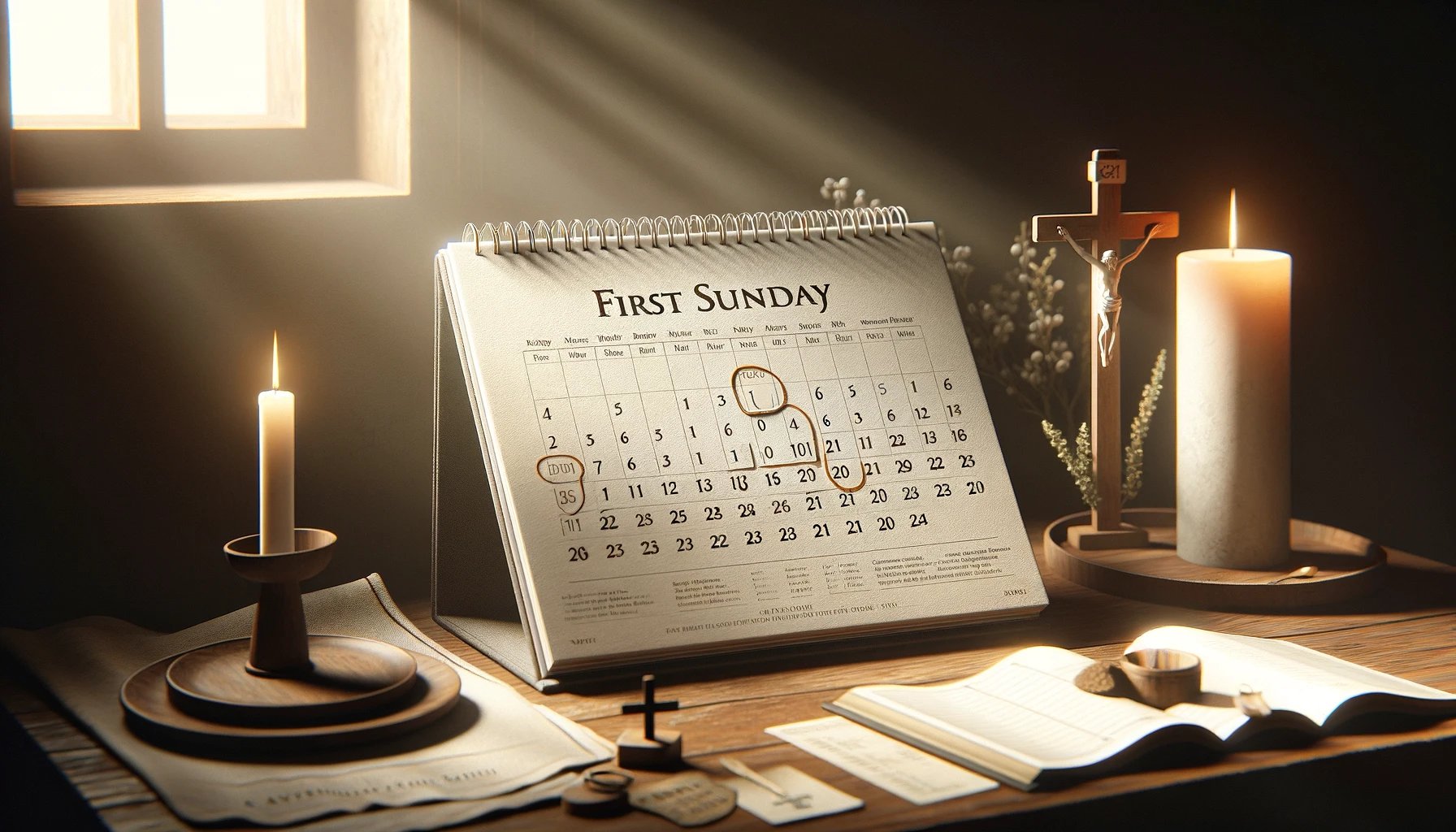Home>Special Themes>What Is The First Sunday Of Advent


Special Themes
What Is The First Sunday Of Advent
Published: February 12, 2024
Peter Smith, Editorial Director at Christian.net, combines deep insights into faith, politics, and culture to lead content creation that resonates widely. Awarded for his contributions to religious discourse, he previously headed a major organization for religious communicators, enhancing dialogue on faith's societal impacts.
Discover the significance of the first Sunday of Advent and its special themes. Learn how this day marks the beginning of the liturgical year. Explore traditions and customs associated with this important observance.
(Many of the links in this article redirect to a specific reviewed product. Your purchase of these products through affiliate links helps to generate commission for Christian.net, at no extra cost. Learn more)
Table of Contents
Introduction
The First Sunday of Advent marks the beginning of the liturgical year in many Christian traditions. It is a time of anticipation, preparation, and hope as believers embark on a spiritual journey leading up to the celebration of the birth of Jesus Christ. This significant day holds deep meaning for millions of people around the world, as it symbolizes the start of a period of reflection, prayer, and joyful expectation.
During this time, individuals and communities come together to focus on the spiritual significance of the season, setting the stage for the joyous festivities that lie ahead. The First Sunday of Advent serves as a poignant reminder of the timeless message of hope and renewal, inviting people to embrace the spirit of love, compassion, and unity.
As we delve into the history, meaning, and traditions associated with Advent, we will gain a deeper understanding of the profound impact this period has had on countless lives throughout history. From its origins to its modern-day observance, the First Sunday of Advent continues to serve as a beacon of light, guiding individuals on a journey of faith and reflection.
Read more: What Is The First Advent Sunday
History of Advent
The history of Advent can be traced back to the early centuries of Christianity. The word "Advent" is derived from the Latin word "adventus," which means "coming" or "arrival." The origins of Advent can be linked to the preparation for the celebration of the birth of Jesus Christ. While the exact date of the inception of Advent is not definitively documented, its roots can be found in the practices of early Christians who sought to prepare for the commemoration of Christ's birth.
The early Christians observed a period of fasting and reflection leading up to the feast of the Nativity. This preparatory period varied in length and intensity, with practices evolving over time. By the 6th century, the observance of Advent had become more structured, with the Church in Gaul (modern-day France) instituting a 40-day fast in preparation for Christmas. This period of fasting and spiritual contemplation mirrored the 40-day Lenten season preceding Easter.
Over the centuries, the observance of Advent continued to evolve, with various Christian denominations adopting their own traditions and customs. The focus of Advent expanded to encompass not only the anticipation of Christ's birth but also the expectation of his second coming. This dual emphasis on the past and future advents of Christ became a central theme of the Advent season.
In the 20th century, the liturgical reforms of the Second Vatican Council brought about a renewed emphasis on the spiritual significance of Advent. The Council sought to reinvigorate the observance of Advent as a time of spiritual preparation, encouraging believers to reflect on the profound meaning of Christ's incarnation and to anticipate his coming with hope and joy.
Today, the observance of Advent varies among different Christian traditions, with some emphasizing the themes of hope, peace, joy, and love during the four weeks leading up to Christmas. Advent wreaths, calendars, and devotional readings have become integral parts of the Advent observance, serving as tangible symbols of the spiritual journey toward the celebration of Christ's birth.
As we delve into the history of Advent, we gain a deeper appreciation for the rich tapestry of traditions and practices that have shaped this sacred season. The historical evolution of Advent reflects the enduring significance of preparing our hearts and minds for the coming of Christ, both in the celebration of his birth and in the hopeful anticipation of his return.
Meaning of Advent
Advent holds profound significance within the Christian faith, encapsulating a multifaceted meaning that resonates deeply with believers around the world. At its core, Advent represents a period of joyful anticipation and spiritual preparation for the celebration of the birth of Jesus Christ. This season serves as a poignant reminder of the timeless message of hope, renewal, and the fulfillment of God's promise to humanity.
The essence of Advent is intricately woven with the themes of hope, peace, joy, and love. Each week of Advent is dedicated to the contemplation of these fundamental aspects, symbolized by the lighting of candles on an Advent wreath. The first candle, often purple or blue, represents hope and serves as a beacon of light amidst the darkness, signifying the anticipation of Christ's coming.
Moreover, Advent encompasses the profound concept of waiting with purpose. It encourages believers to reflect on the significance of Christ's incarnation and to prepare their hearts and minds for the celebration of his birth. This period of waiting is not passive but rather an active and intentional journey of spiritual renewal, fostering a sense of eager expectation and readiness for the arrival of the Savior.
Furthermore, Advent extends beyond the historical event of Christ's birth, inviting believers to contemplate the broader implications of his coming. It serves as a reminder of the hope and promise of redemption, as well as the anticipation of Christ's eventual return. This dual focus on the past and future advents of Christ infuses the season with a profound sense of continuity, connecting believers across generations and reaffirming the enduring relevance of the message of salvation.
In essence, the meaning of Advent transcends mere observance and ritual, calling individuals to embark on a transformative journey of faith and spiritual renewal. It beckons believers to embrace the virtues of patience, hope, and joyful expectation, fostering a sense of unity and anticipation within the community of faith. Ultimately, Advent serves as a powerful testament to the enduring significance of Christ's birth and the timeless message of hope and redemption that continues to resonate with believers throughout the ages.
Significance of the First Sunday of Advent
The First Sunday of Advent holds profound significance within the Christian calendar, marking the commencement of the Advent season and setting the stage for a period of spiritual reflection, anticipation, and preparation. This inaugural Sunday serves as a poignant reminder of the timeless message of hope, renewal, and the fulfillment of God's promise to humanity. As the first candle on the Advent wreath is lit, it symbolizes the dawning of a new spiritual journey, inviting believers to embark on a transformative path leading up to the celebration of the birth of Jesus Christ.
The First Sunday of Advent carries a sense of eager expectation, as it heralds the beginning of a season dedicated to the contemplation of the fundamental themes of hope, peace, joy, and love. The lighting of the first candle, often purple or blue, represents hope and serves as a beacon of light amidst the darkness, signifying the anticipation of Christ's coming. This act of illumination not only infuses the surroundings with a sense of warmth and reassurance but also serves as a visual reminder of the spiritual journey that lies ahead.
Moreover, the First Sunday of Advent serves as a call to action, prompting believers to prepare their hearts and minds for the celebration of Christ's birth. It marks the commencement of a period of intentional waiting, not in passivity, but in active anticipation and readiness for the arrival of the Savior. This sense of purposeful waiting fosters a spirit of unity and communal reflection, as individuals and congregations come together to embark on this collective journey of spiritual renewal.
Furthermore, the First Sunday of Advent encapsulates the profound concept of new beginnings. It invites believers to embrace the promise of redemption and the hope of a fresh start, both on a personal and communal level. This inaugural Sunday sets the tone for a season of introspection, prayer, and joyful anticipation, laying the foundation for the spiritual growth and renewal that will unfold in the weeks to come.
In essence, the significance of the First Sunday of Advent extends far beyond the ceremonial lighting of a candle. It represents a symbolic threshold, marking the transition from ordinary time to a season of profound spiritual significance. It serves as a reminder of the enduring relevance of the message of hope and salvation, inviting believers to embark on a transformative journey of faith and reflection. As the first candle is kindled, it ignites a sense of anticipation and unity, illuminating the path toward the joyous celebration of Christ's birth.
The First Sunday of Advent stands as a testament to the enduring impact of this sacred season, beckoning believers to embrace the virtues of hope, renewal, and joyful expectation. It serves as a poignant reminder of the timeless message of Christ's birth and the profound significance of the Advent season, inviting individuals to embark on a journey of spiritual renewal and anticipation as they prepare to welcome the Savior into their hearts and homes.
Traditions and Customs
The observance of Advent is rich with traditions and customs that have been cherished by generations of believers, adding depth and meaning to this sacred season. These time-honored practices serve as tangible expressions of faith, unity, and joyful anticipation, fostering a sense of spiritual connection and continuity across communities and cultures.
One of the most iconic symbols of Advent is the Advent wreath, a circular arrangement of evergreen branches adorned with candles. Typically, the wreath features four candles, with a fifth candle often placed in the center. Each candle represents a different aspect of the Advent journey, with the first candle symbolizing hope, the second representing peace, the third signifying joy, and the fourth embodying love. As the weeks of Advent progress, these candles are successively lit, illuminating the path toward the celebration of Christ's birth.
The lighting of the Advent candles is accompanied by devotional readings and prayers, often conducted in family settings or within congregations. These moments of reflection and contemplation serve to deepen the spiritual significance of the season, fostering a sense of unity and shared purpose among participants. The Advent wreath, with its vibrant symbolism and communal rituals, serves as a focal point for the collective observance of the season, infusing homes and churches with a sense of warmth and spiritual resonance.
Another cherished tradition associated with Advent is the use of the Advent calendar. This interactive and anticipatory tool provides a daily countdown to Christmas, often in the form of a decorative calendar with numbered doors or compartments. Each day, a door is opened to reveal a small treat, scripture verse, or symbolic image, serving as a daily reminder of the approaching celebration. The Advent calendar not only builds excitement for Christmas but also offers a daily opportunity for spiritual reflection and anticipation, engaging individuals of all ages in the joyful journey of Advent.
In addition to these widely recognized customs, various cultures and Christian denominations have developed their own unique traditions to mark the Advent season. From special musical performances and processions to the creation of handmade Advent decorations and crafts, the diversity of customs surrounding Advent reflects the universal significance of this sacred time. These traditions not only enrich the observance of Advent but also serve to connect individuals to the broader tapestry of faith and heritage, fostering a sense of belonging and shared reverence for the season.
As we immerse ourselves in the traditions and customs of Advent, we are reminded of the enduring power of these practices to unite and inspire believers across the globe. These cherished traditions serve as timeless expressions of faith, hope, and joyful anticipation, inviting individuals to embrace the profound significance of the Advent season and to embark on a collective journey of spiritual renewal and celebration.
Conclusion
In conclusion, the First Sunday of Advent heralds the beginning of a sacred and transformative season within the Christian calendar. As the first candle is lit on the Advent wreath, it symbolizes the dawn of a period of hopeful anticipation, spiritual reflection, and communal unity. The rich history of Advent, spanning centuries of tradition and evolution, underscores the enduring significance of this season as a time of preparation for the celebration of Christ's birth.
The profound meaning of Advent, encapsulating themes of hope, peace, joy, and love, resonates deeply with believers, inviting them to embark on a journey of spiritual renewal and anticipation. The First Sunday of Advent serves as a poignant reminder of the enduring relevance of the message of hope and salvation, fostering a sense of unity and shared purpose within the community of faith.
The observance of Advent is enriched by cherished traditions and customs, such as the lighting of the Advent wreath, the use of Advent calendars, and a myriad of cultural and denominational practices. These time-honored rituals serve as tangible expressions of faith and anticipation, uniting believers across diverse backgrounds and cultures in a shared celebration of the season.
As individuals and communities come together to observe the First Sunday of Advent, they are reminded of the timeless message of Christ's birth and the promise of redemption. This inaugural Sunday sets the stage for a season of spiritual growth, reflection, and joyful anticipation, inviting believers to prepare their hearts and minds for the celebration of the Savior's arrival.
In essence, the First Sunday of Advent stands as a testament to the enduring impact of this sacred season, beckoning believers to embrace the virtues of hope, renewal, and joyful expectation. As the journey of Advent unfolds, it serves as a powerful reminder of the timeless message of Christ's birth and the profound significance of preparing our hearts and homes to welcome the Savior into our lives.
The First Sunday of Advent serves as a beacon of light, guiding believers on a transformative path of spiritual renewal and anticipation, as they prepare to welcome the Savior into their hearts and homes.














